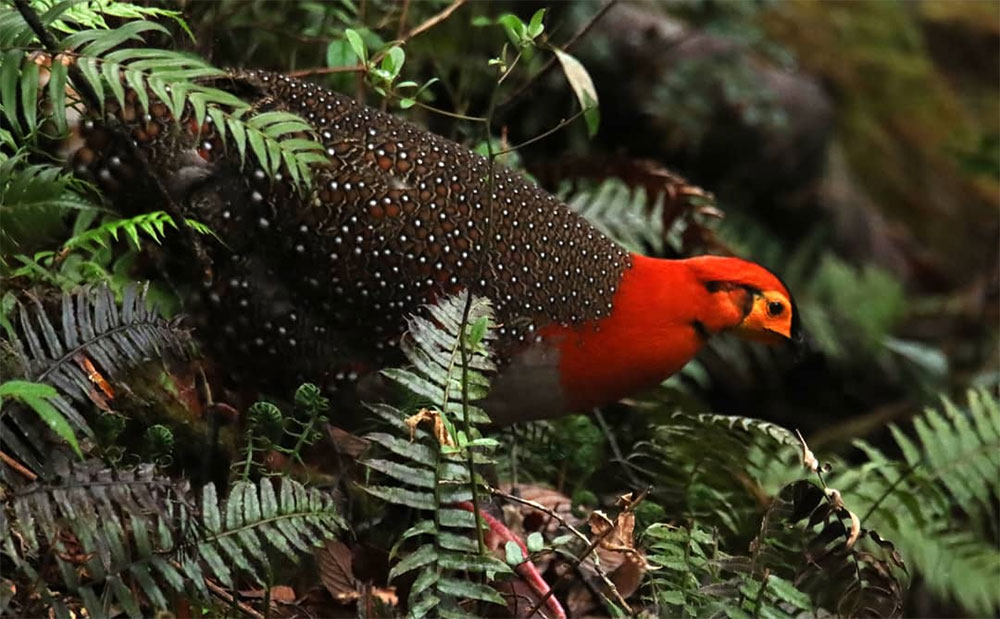Neten Dorji
Khaling—Rich in biodiversity, the Khaling-Kharungla area is poised to become a nature-based or ecotourism attraction in the east. Lack of infrastructure impeded the Dzongkhag from reaping the benefits.
However, this is poised to change. Recognising the potential and the importance of hospitality services in promoting ecotourism, the Divisional Forest Office, Trashigang, has started constructing restrooms and coffee cafes at Kharungla and Wamrong.
Chief Forest Officer, Karma Leki, is confident that Khaling-Kharungla can play a critical role in the eastern Bhutan tourism circuit. The division had received Nu 5.76 million in funding from the government and the UNDP/GEF Ecotourism project. “We have also identified two homestays in Khaling to cater to tourists as well as increasing the number of local pilgrims to Dangling Tsho,” Karma Leki said.
Khaling and Lumang gewog is home to seven species of cats, including the Royal Bengal tiger. It also hosts various mammals such as the Red panda, Assamese macaque, Sambar deer, Dhole, Asiatic black bear, and over 250 bird species. It is also home to the national butterfly, Ludlow’s Bhutan Glory, Blyth’s(locally known as Sersal Bram), Temminck’s (Mokar Bram)and Satyr tragopan (Dhoram Bram) and Ward’s trogon.
A successful ecotourism is expected to enhance rural livelihoods by engaging the community in offering tourism services, including homestay, roadside stations, birding guides, sale of local products, and other services. “Locals could also benefit from the sale of agriculture and livestock products,” said Karma Leki.
Natural enthusiastic and documentary filmmaker, Sonam Dorji said birding plays a significant and growing part in the local tourism industry, and creates direct and indirect economic benefits to local communities.
“We need to train, empower and engage more local communities to act as hosts to the tourists, as per the homestay model,” said Sonam Dorji. “We need to teach more villages to focus on quality tourism and strike a balance between nature conservation and community development.”
Khaling is a heaven for endangered bird species like Tragopan and the ludlowi butterfly species, which have the potential to attract tourists to the east.
“Satyr Tragopan is widespread in the country, but other species like Temminck’s and Blyth’s Tragopan can only be spotted in this area where tourists can observe three types of Tragopan at the same time,” Sonam Dorji added. These birds can be found in the months of March, April, May, and between September and November.
Tourists can also witness two species of butterflies – Bhutanitis ludlowi and Ludlow’s Bhutan Glory. “Tourists do not have to travel to Trashiyangtse to find the national butterfly; they can easily witness them near Yonphula Domestic Airport,” said Sonam Dorji. “After the birdwatch, tourists can also experience the culture of highlanders and the people of Khaling.”
Khaling is also popular for weaving. Kelzang Choden, who develops embroidery featuring three types of Tragopans and butterflies, said that increasing visitors will directly benefit local communities.
“So far about 10 tourists have visited my shop. I hope to see more visitors here,” she said, adding the earned Nu 10,000 selling embroidery of Tragopans and butterfly.
Khaling Gup Sonam Dorji said that being near the Domestic Airport, it is easier for tourists to visit Kharungla.
“Spending more to live in the midst of nature and enjoy quality tourism packages would help my people who are already dependent on natural resources to make a living,” said the gup.
Meanwhile, Trashigang Forest Division has identified Khaling-Kharungla landscape as a key biodiversity area and has observed that the place is best to conduct research related to flora and fauna.


